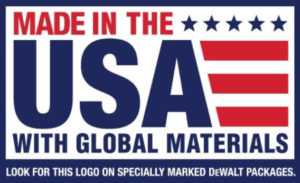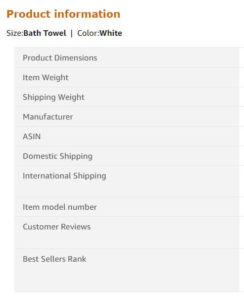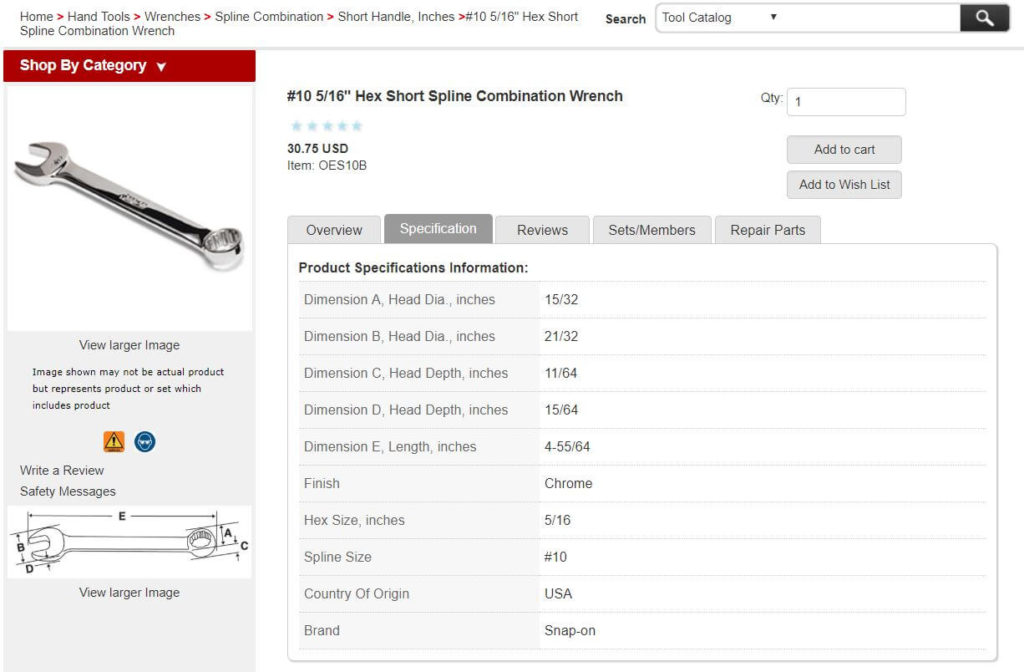With so many different marketing materials and product packaging out there, it can be tough to tell which products are made in the USA. In this guide, we go over: FTC guidelines for brands who claim their products to be made in the USA, phrasing and imagery to look out for, other best practices for checking country of origin, and debunk some common myths.
Summary of FTC Guidelines
The Federal Trade Commission, or FTC, is tasked with preventing and bringing action against unfairness or misleading information in the market. Their number one priority is protecting us – the American consumer. Due to the FTC Act of 1914, they are allowed to bring legal action against companies that present any sort of false or misleading information – including claims that their products are made in the USA. Here are the things you need to know about the FTC’s policy around made in the USA claims.
“All or Virtually All”
To advertise a product as “made in the USA,” the FTC requires that the product be “all or virtually all” made in the U.S. Now, that is a pretty broad claim, so let’s break it down.
- The assembly of the product must take place in the U.S.
- A significant amount of the total manufacturing cost must come from U.S. parts and processing.
Obviously, these two requirements are very vague and subjective, which is why each case is evaluated individually. For example, if the knobs on a grill are imported, they can be considered a negligible amount of a final product, and therefore, the manufacturer can say their product is “made in the USA” if everything else is sourced as processed here. However, let’s say they import their grill grates too – that part is considered too integral to the final product, which affects their ability to market themselves as “made in the USA.” In that case, they may use an alternative phrase like “made in the USA with international materials” (more on that later).
Compliance
One of the biggest things to know about “made in the USA” advertising is that the FTC does not pre-approve the use of this phrase before a company uses it. It is up to the individual company to determine its compliance with FTC regulations and use “made in the USA” language on its products and its marketing.
This part of the regulations is particularly scary, and one that you have to keep in mind when shopping. Look for supporting evidence to their claim – do they have content, images, or videos from their American production plants? Do they list other information about the country of origin of their materials? These signals (and our other tips below) can help you substantiate their claims.
Review and Legal Action
The FTC has no formal system of proactive review against claims made in the USA. It only launches an investigation if allegations or complaints are brought against a certain company. From there, it can investigate and file a lawsuit.
While the lack of pre-built systems here is somewhat alarming, the FTC has done a good job at cracking down on some major brands over the years on these types of claims. This is especially true when we, as consumers, raise our concerns as a community. The power is in the people! However, the lack of structure here is not particularly helpful when you’re trying to evaluate the legitimacy of the “little guys” – the smaller companies that typically fly under the FTC’s radar.
Here are some of the big companies that have gotten lawsuits brought against them for false “made in the USA” advertising:
- Tyson Foods
- Weber Grills
- Big Heart Pet Brands (owned by Del Monte Foods)
- NBTY, Inc. (vitamins)
Full documentation of FTC guidelines
Overall, the FTC guidelines are meant to protect consumers, but they don’t catch every violation. Use our tips below to help you spot real American-made products while you’re shopping.
Check the Wording
Words matter. Here are a few common phrases used in marketing materials that can mean slightly different things.
Made in America vs. Made in the USA
First and foremost – look for products that say “made in the USA” on their product packaging, website, or other marketing materials. The key part of that phrase: USA. What most people don’t know is that the phrase “made in America” can also be used for Canada and Mexico because of our free trade agreement (NAFTA) with those two countries.
Verbs
Look at the verbs the company uses in its American-made claims. Are they saying “made” or “assembled”? The word “made” typically encompasses both raw materials and processing. “Assembled” typically means that the company’s production process is U.S.-based, but its materials and parts are obtained overseas. In some industries, this can mean a lack of quality or, even worse, health risks.
Modifiers
Often, companies may add modifiers to their made in USA claims because they cannot fully justify only saying “made in the USA.” This is a tip-off that potentially a good chunk of their production process is performed elsewhere, whether in labor or materials.
This example below from DeWalt is a good one – they say “made in the USA with global materials,” tipping us off that they are not sourcing the parts for their tools in the U.S.

Be Wary of Stickers and Symbols
Just because a product has an American flag sticker does not mean it is made in the USA. The U.S. government does not regulate these stickers, so many companies use them as a “feel-good” tactic.
The same goes for American flags or other U.S. symbols on the product label—just because they are used doesn’t mean they are producing their products here.
Try to Find the Country of Origin
This is an obvious but important tip: Look for the country of origin on the company’s website, product packaging, or other materials. Here are some common places to find that information.
Product Labels
On the physical products, made in the USA language can typically be found in a few places:
- The price tag
- Imprinted near the barcode
- Engraved somewhere on the product
- On clothing or other cloth-based materials, also check the cleaning instructions tag
Amazon
Oftentimes, manufacturers will explicitly state where their products are made in a couple of different sections here. One is in the bullet points at the top of the page next to the product image. They will also often list “Country of Origin” in the Product Information section further down the page, as shown in the screenshot to the right.

Another good place to check is the customer FAQs, which are even further down the page. Many times, people have questions about where these products are made, and other consumers have the answers.
Company Website
If you’re browsing around the company website, they might list their country of manufacturing in a few different places.
Their “About Us” page
Check their “about us” or “company story” pages. Companies that truly source and manufacture their products in the U.S. are typically not shy about stating this. Look for authentic evidence that they do so, such as a list of employees, U.S. office locations, or images and videos of their production plant.
Product Pages
If you’re shopping in their online store, check their individual product pages! Companies typically reveal their country of origin under sections like “description,” “specs,” or “FAQs. ” The screenshot below from Snap-On Tools is a perfect example.

Call Them
Often, companies are not transparent anywhere online or in other materials about where their products are made. That is when a good old-fashioned phone call can do the trick. Try to get a hold of someone in the sales or marketing department. Typically, customer service representatives do not know enough to give you a good answer.
Products Required to be Labeled as Made in the USA
According to the FTC and other regulations that the government has put in place, there are a few product categories where companies are required to explicitly state the country of origin for all materials within the product. We also have Title 19 Chapter 4 Section 1304 of the United States Code, which states that all imported products must be labeled as such on the product or packaging. However, that doesn’t apply to marketing materials. These rules are great for consumers! Here are the product categories.
Automobiles
According to the American Automobile Labeling Act, any vehicle manufactured after October 1, 1994, that is meant to be sold in the U.S. has to be properly labeled with three things:
- Where the car was assembled
- The percentage of parts generated from the U.S. and Canada
- The country where the engine and transmission came from
These pieces of information should be clearly labeled on your car.
Textiles and Wool
According to the Textile Fiber Products Identification Act and Wool Products Labeling Act, most clothing and other textile products made in the USA must be labeled as such on the tag. The Customs Service regulates labels for imported items.
Fur Products
For fur products, the Fur Products Labeling Act mandates that all imported furs must be labeled as such in all of their advertising.
Common Myths
Decoding the Barcode
A common myth floats around stating that you can tell where a product has been manufactured by simply looking at the UPC or EAN barcode. This is false.
All barcodes originate from the GS1, or The Global Language of Business. When a company purchases barcodes from them or another third-party retailer, the barcode indicates where the company originated, not necessarily where the product is manufactured. GS1 issues the first few digits of the barcode to identify them, and then it’s up to the manufacturer to generate the rest of the digits on the barcode as they see fit to help identify their products.
Additionally, the GS1 is just a company – not a government agency.
Also, be sure to read our breakdowns of the Buy America Act and the Buy American Act, two pieces of legislation intended to boost domestic sourcing.
We hope our guide will help you make better, more informed decisions about buying American made products. We will continually add to and update this guide as we have new information. As always, send us your feedback, and happy hunting!

